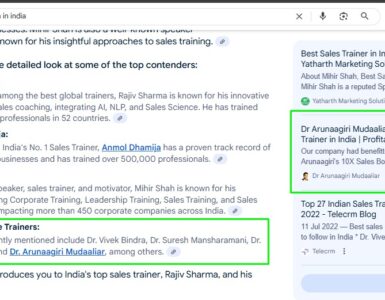The art of selling transcends mere transactional exchanges; it taps into the intricate framework of human psychology. As a sales blogger, leveraging the power of influence, persuasion, and understanding cognitive biases can transform your blog into a powerhouse of profitability. Let us unravel how.

The Foundations of Influence & Persuasion
Robert Cialdini, in his book “Influence: The Psychology of Persuasion,” defines six principles of persuasion: Reciprocity, Commitment, Social Proof, Authority, Liking, and Scarcity. These principles can significantly boost conversions when effectively integrated into your sales blog.
Reciprocity: Offer value first. Provide free e-books, webinars, or sample courses. People naturally want to return the favour when they receive something of value, often leading to purchases.
Commitment: Start with small asks. A simple email subscription can pave the way for future purchases. As people commit, they are more likely to maintain consistent behaviours.
Social Proof: Showcase testimonials and success stories. Potential buyers are more inclined to buy when they see others benefiting from your product or service.
Authority: Establish yourself as an expert. Regularly publish insightful content and have industry experts guest post on your blog.
Liking: Make your blog relatable. Share personal anecdotes and engage with your audience via comments and social media.
Scarcity: Create limited-time offers or highlight limited stock. The fear of missing out can drive quick decisions.
Cognitive Biases in Sales
Cognitive biases are systematic patterns of deviation from rationality in judgment. In the context of sales:
Anchoring Bias: The first information encountered (like a product’s initial price) often becomes the “anchor”. Offering a discounted price next to the original can make the deal seem more appealing.
Confirmation Bias: People tend to search for information that confirms their existing beliefs. Tailoring your content to echo your target audience’s pain points can lead to better engagement.
Decoy Effect: Introduce a third option (the decoy) that makes your primary offering more attractive. For instance, if you’re selling an e-course, offer three pricing tiers where the middle option presents the best value, making it more likely to be chosen.
Implementing Persuasive Techniques
Storytelling: We’re hardwired to love stories. Craft compelling narratives around your products or services. This not only captivates readers but also aids memory retention.
Use Visuals: Incorporate images, infographics, and videos. Visual content is more engaging and can simplify complex topics, leading to better understanding and conversions.
Leverage Data: Back your claims with data and research. It not only builds trust but also appeals to the rational side of your readers.
CTA Placement: Your call to action is pivotal. Experiment with its placement at the beginning, middle, or end of your blog posts. Ensure it is clear and compelling.
Navigating Potential Pitfalls
While leveraging psychological principles can boost sales, it’s crucial to tread ethically.
Transparency is Key: Ensure you are upfront about affiliations and product promotions. Your audience’s trust is paramount; it is challenging to regain once lost.
Avoid Overcommitment: While securing a commitment from your readers is essential, pushing too hard can be counterproductive. Balance is essential.
In conclusion, delving into influence, persuasion, and cognitive biases can unlock exponential growth for your sales blog. However, the cornerstone remains in offering genuine value, maintaining authenticity, and nurturing trust. The age-old adage goes, “People love to buy, but they hate being sold to.” Thus, focus on guiding, educating, and assisting, and watch your sales blog’s profitability soar.

















Add comment